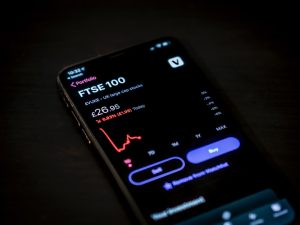Forex Pivot Points: Understanding the Basics
Forex pivot points are an essential tool for traders who want to forecast potential price movements in the financial markets. Pivot points are calculated using the previous day’s high, low, and closing prices. Traders use pivot points to identify potential support and resistance levels, which are crucial in determining entry and exit points in trading positions.
Pivot points are calculated using a simple formula. The pivot point itself is the average of the previous day’s high, low, and closing prices. From there, traders can calculate different levels of support and resistance. The first level of support is called S1 and is calculated by multiplying the pivot point by two and subtracting the previous day’s high. The first level of resistance is called R1 and is calculated by multiplying the pivot point by two and subtracting the previous day’s low.
The second level of support and resistance is calculated by subtracting or adding the difference between the previous day’s high and low to the pivot point. The third level of support and resistance is calculated by adding or subtracting the difference between the previous day’s high and low multiplied by two to the pivot point.
Forex pivot points are commonly used by traders to identify potential trade setups. When the price is trading above the pivot point, traders will look for buy setups. Conversely, when the price is trading below the pivot point, traders will look for sell setups.
How Often Does the Price Touch S1 and R1?
The frequency at which the price touches S1 and R1 will vary depending on the market conditions. In a trending market, the price is likely to touch the pivot point, S1, and R1 multiple times as it moves in the direction of the trend. In a range-bound market, the price is likely to oscillate between the pivot point and the first level of support and resistance without touching S1 or R1.
Traders use pivot points in conjunction with other technical indicators to confirm potential trade setups. For example, if the price is trading above the pivot point and the 50-period moving average, traders will look for buy setups. Conversely, if the price is trading below the pivot point and the 50-period moving average, traders will look for sell setups.
In addition to using pivot points to identify potential trade setups, traders can also use them to set stop-loss orders and take-profit orders. For example, if the price is trading above the pivot point and the trader is in a long position, they can set a stop-loss order below S1 and a take-profit order at R1.
Conclusion
Forex pivot points are a valuable tool for traders who want to forecast potential price movements in the financial markets. Pivot points are calculated using the previous day’s high, low, and closing prices, and traders use them to identify potential support and resistance levels. The frequency at which the price touches S1 and R1 will vary depending on the market conditions, and traders use pivot points in conjunction with other technical indicators to confirm potential trade setups. Overall, pivot points are an essential tool for any trader who wants to improve their trading performance.





